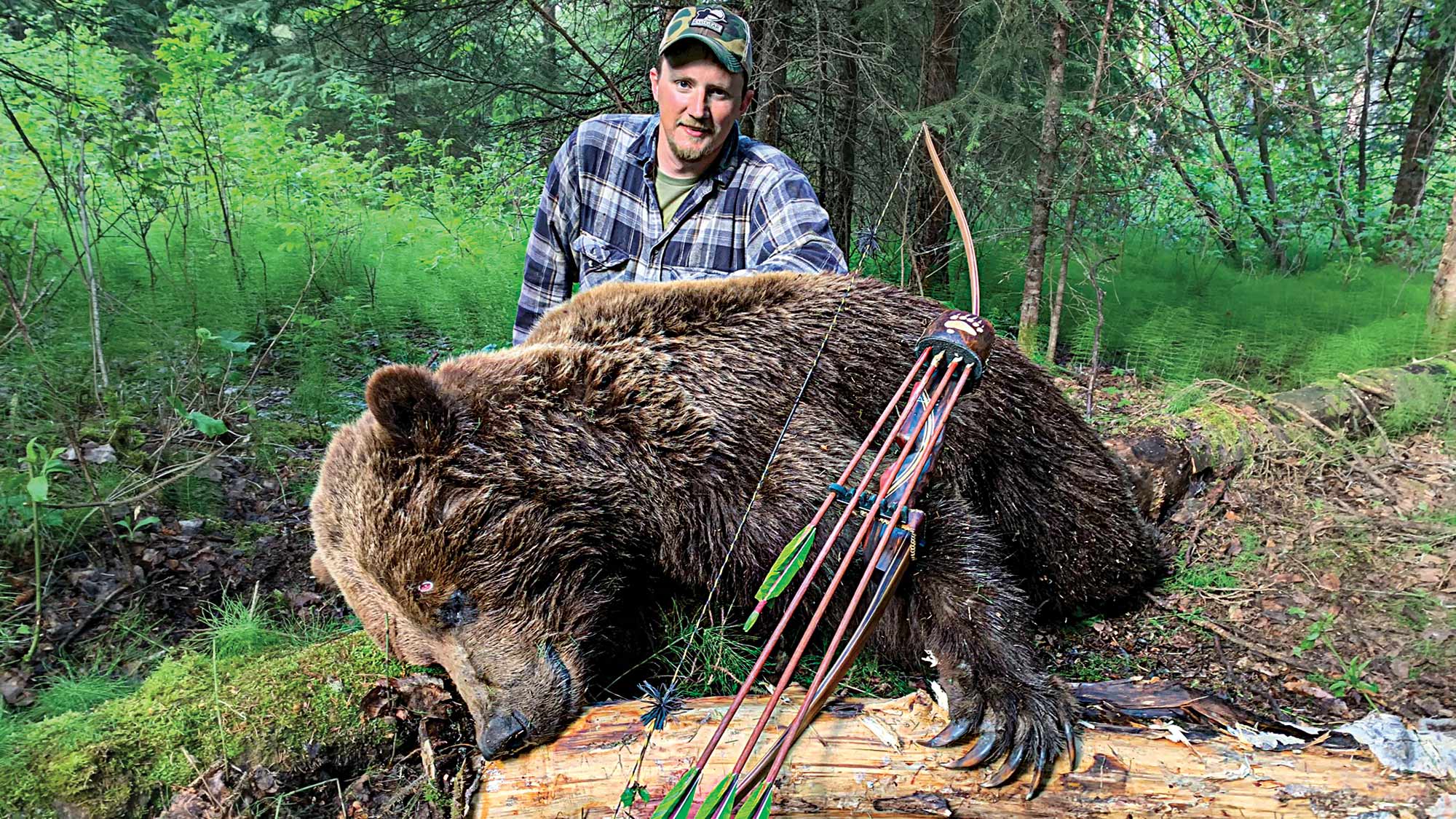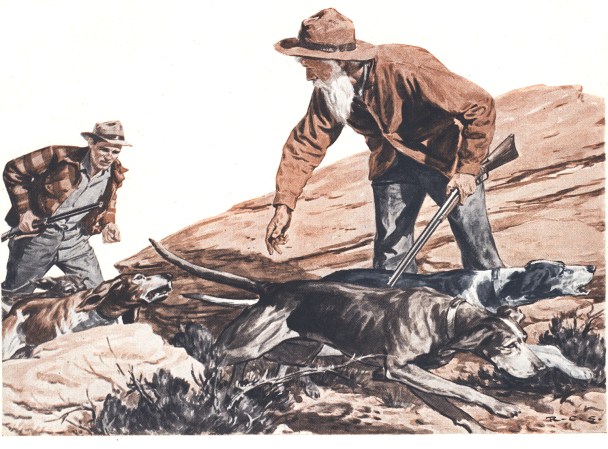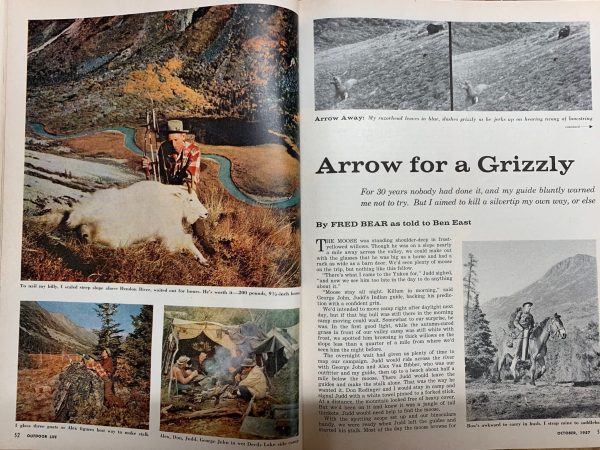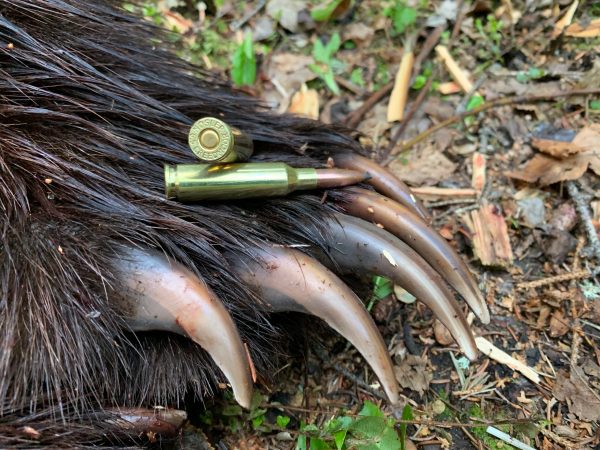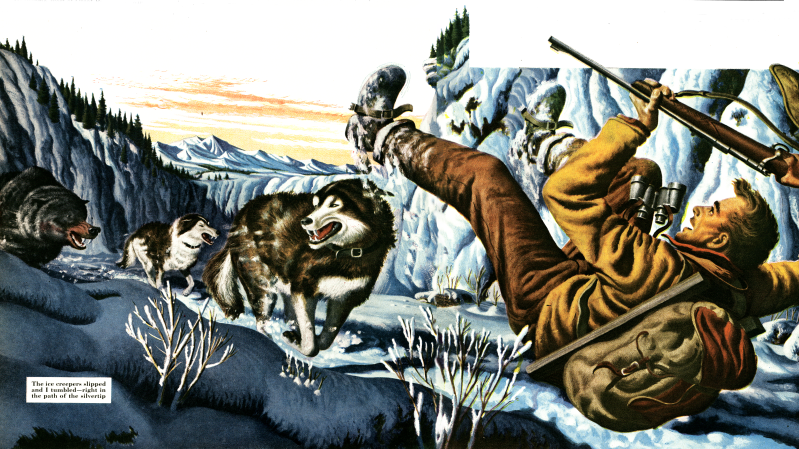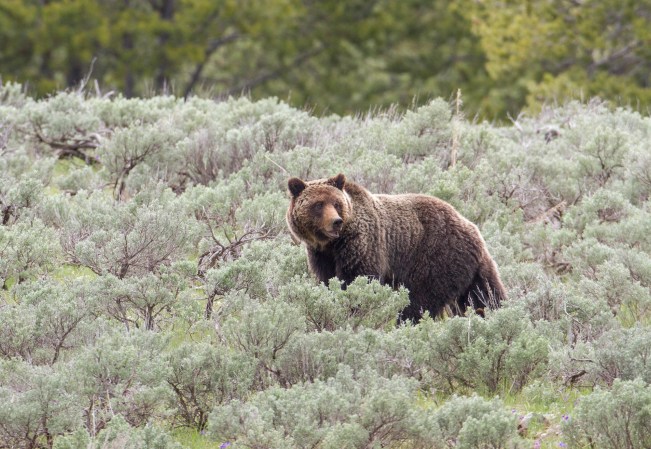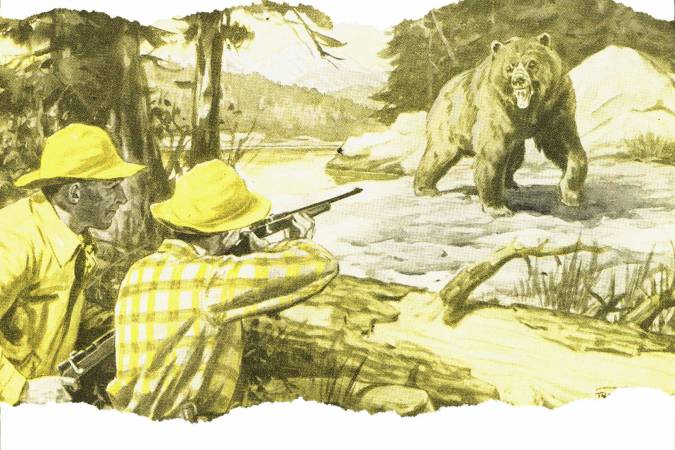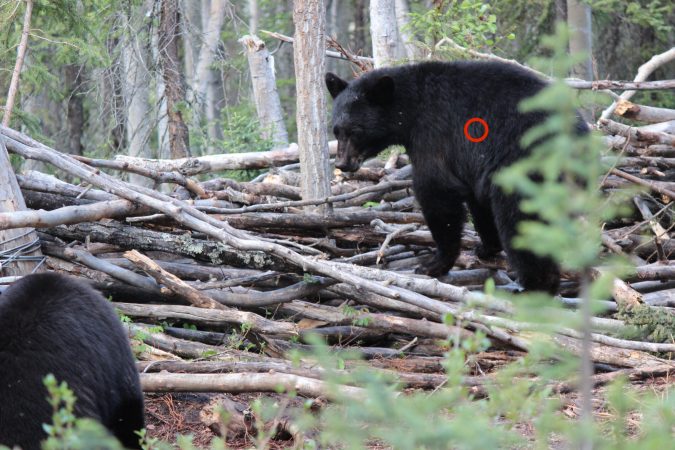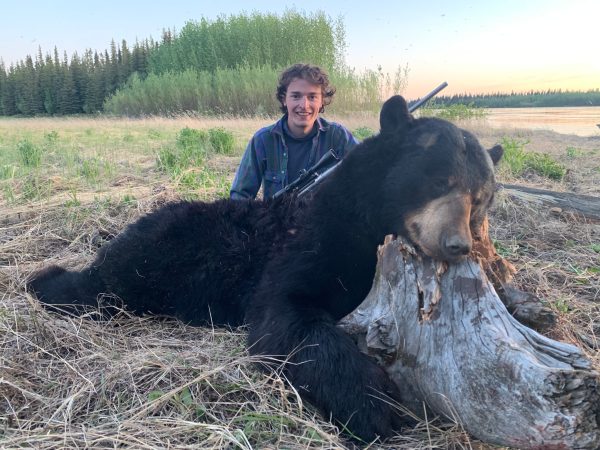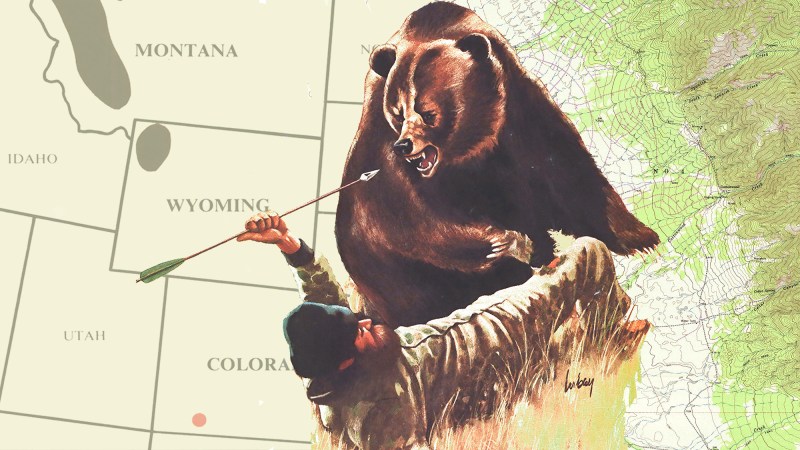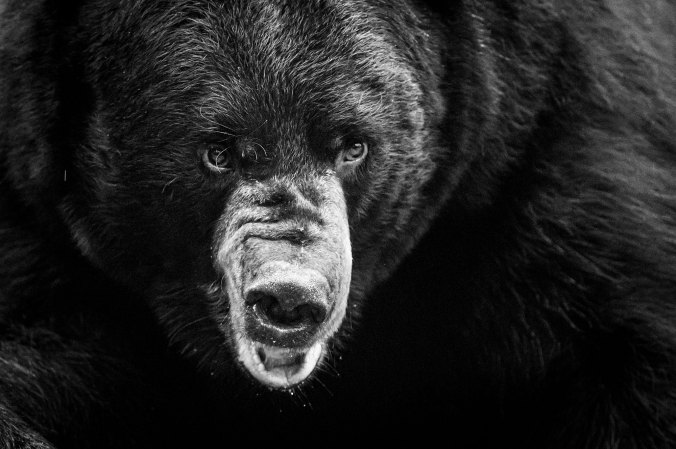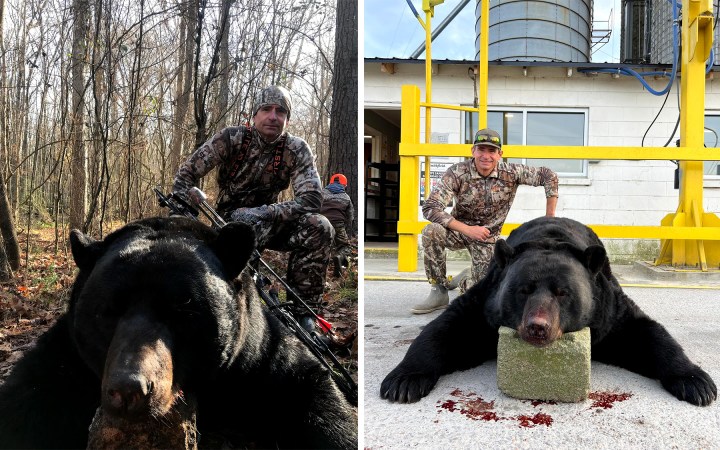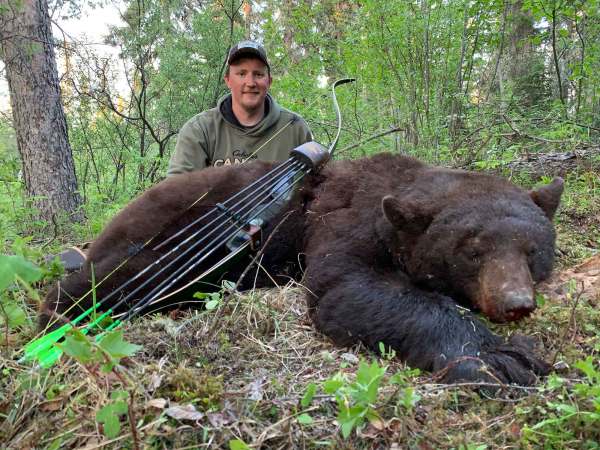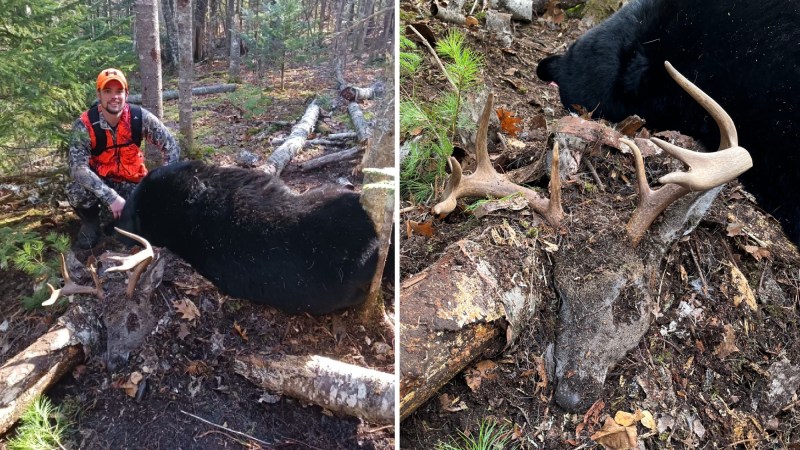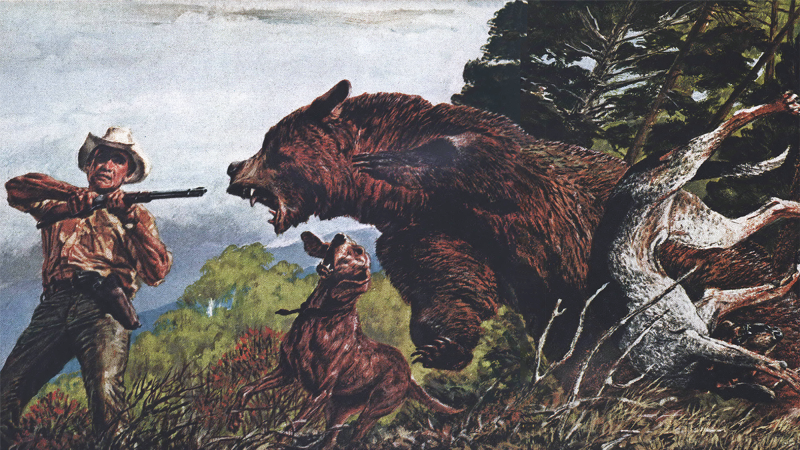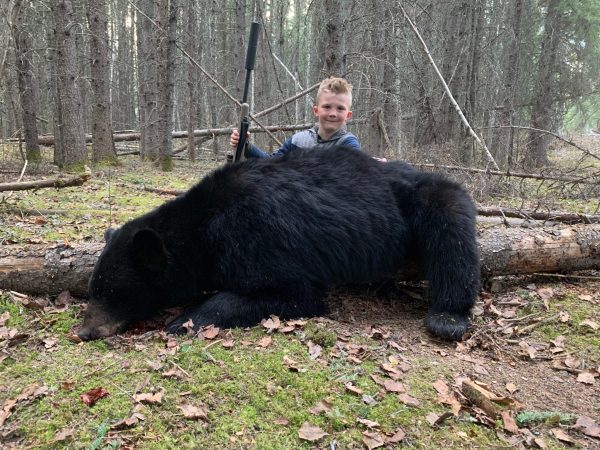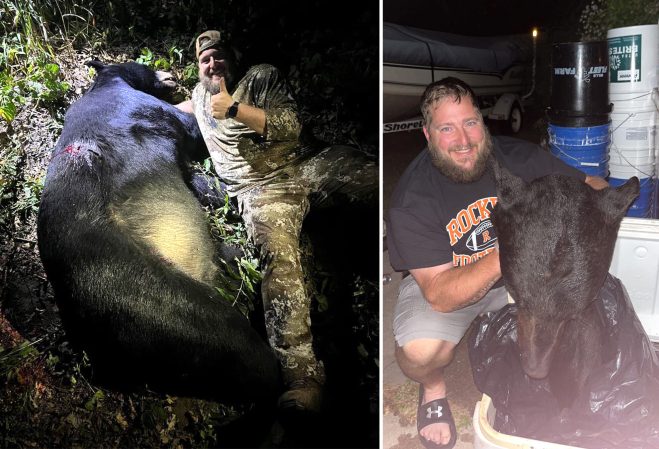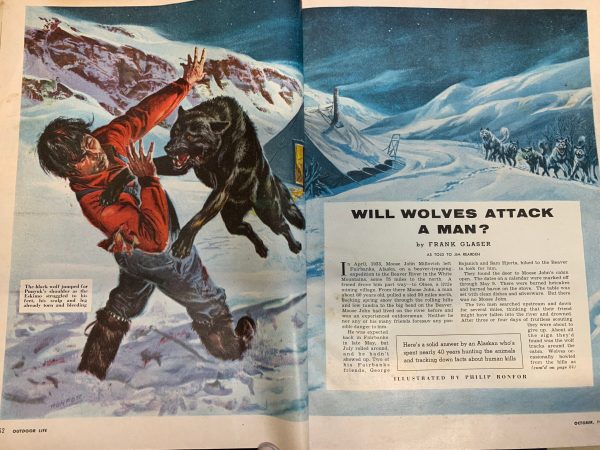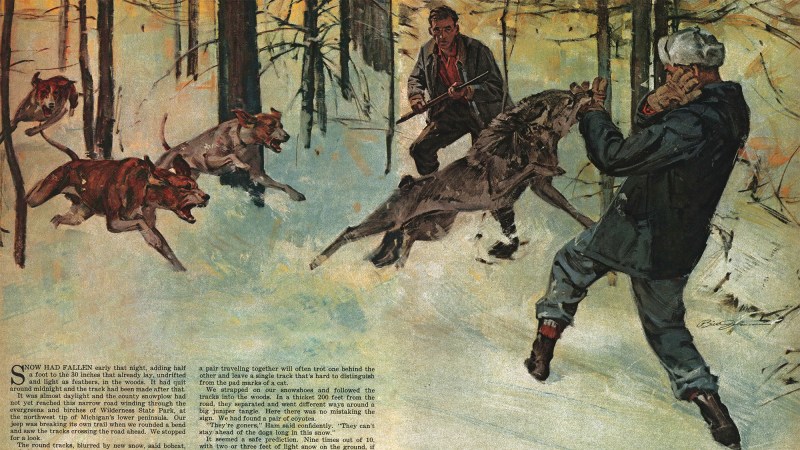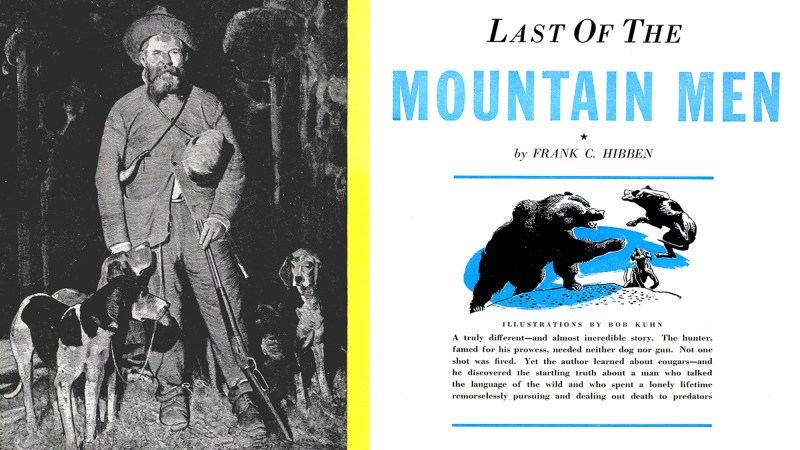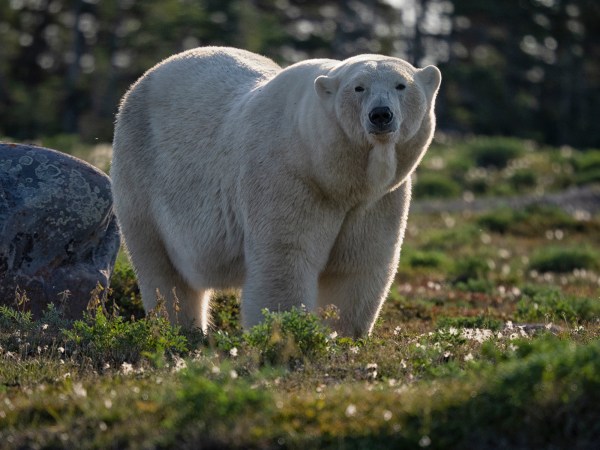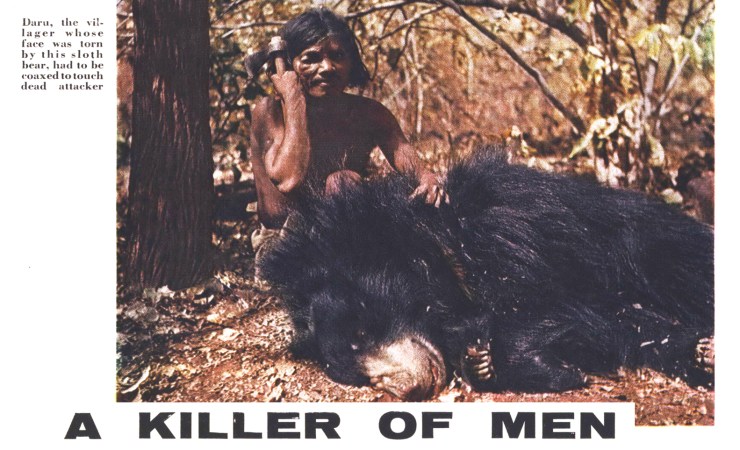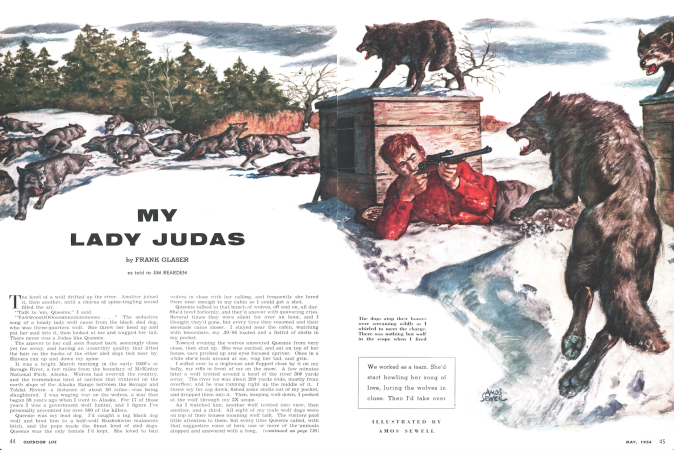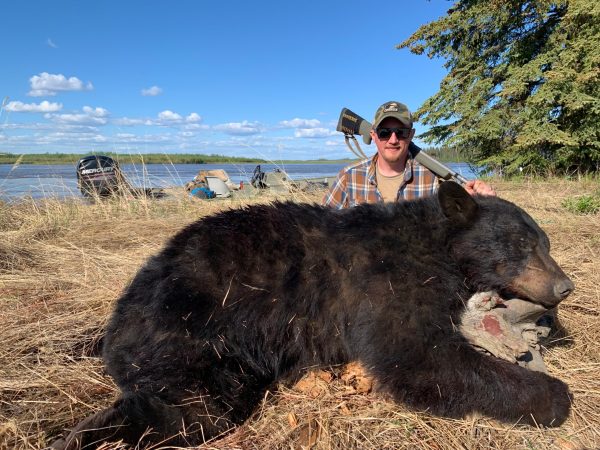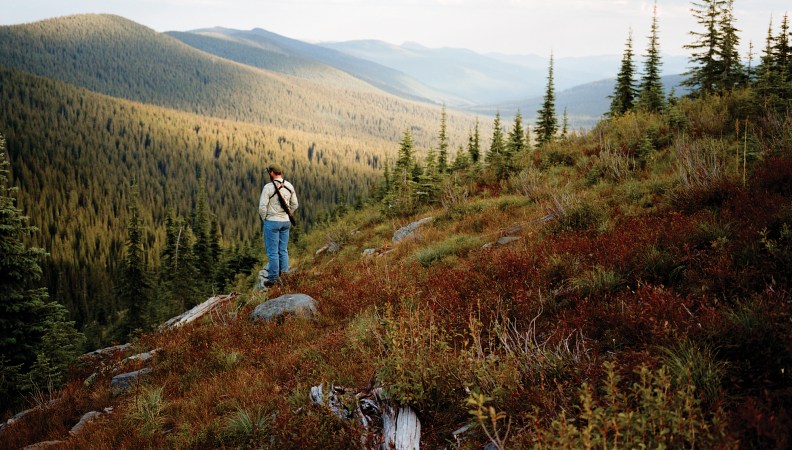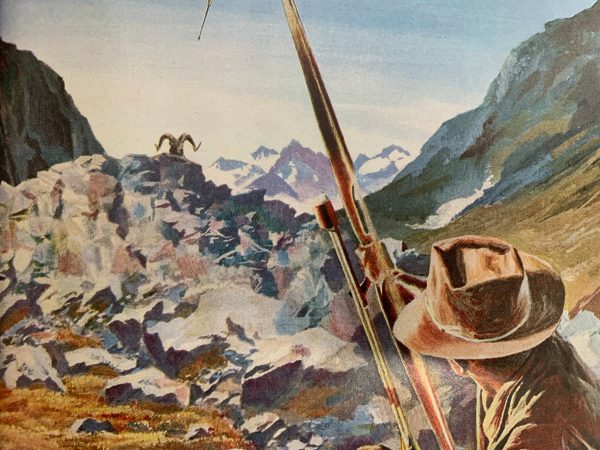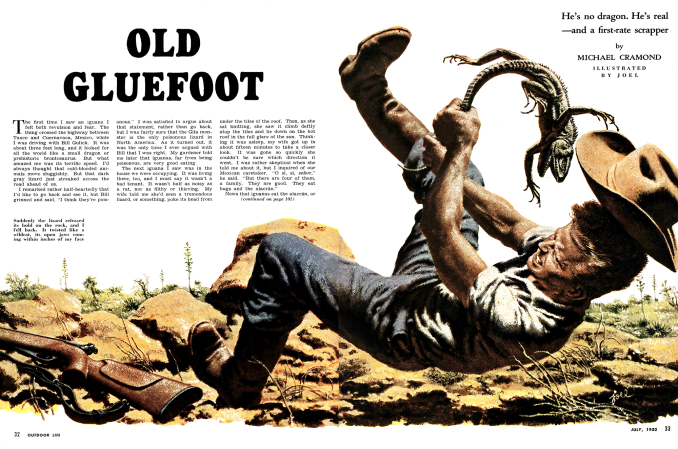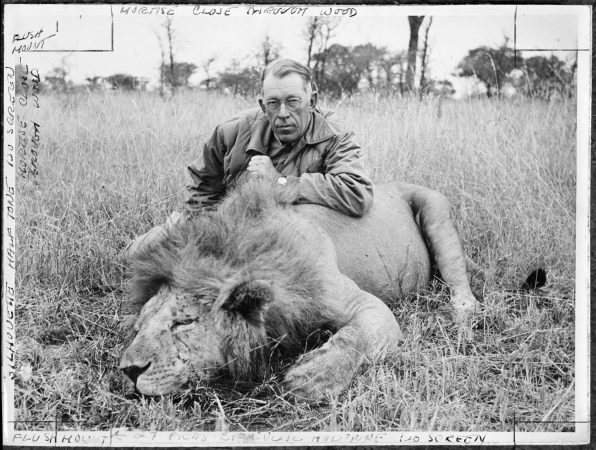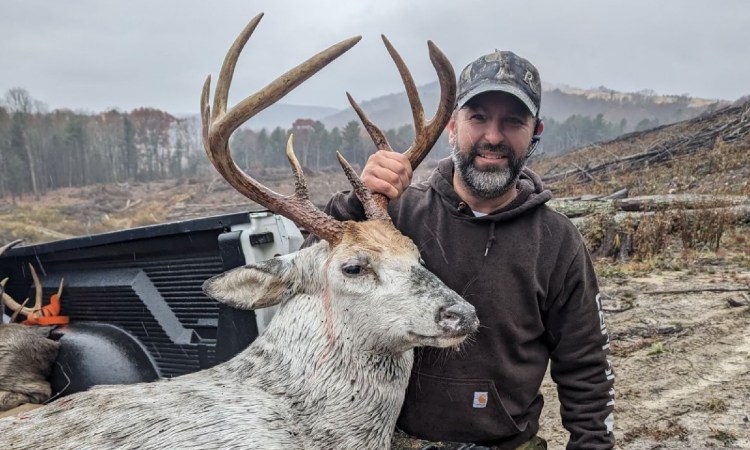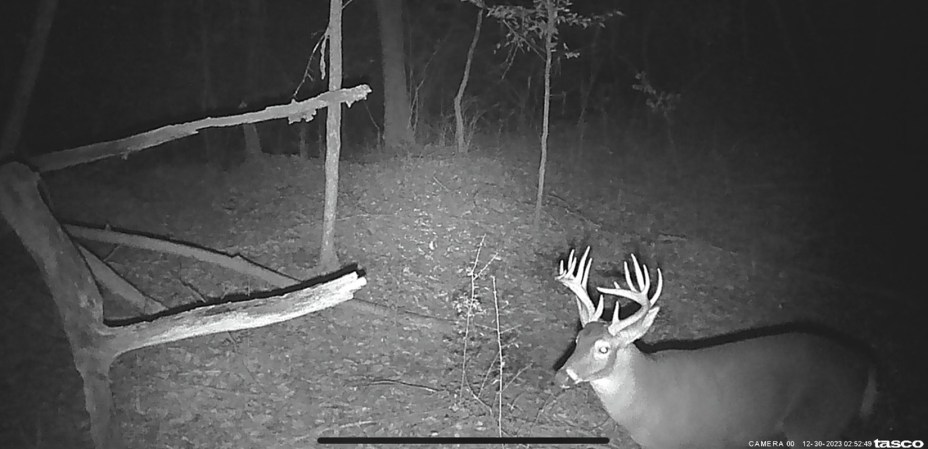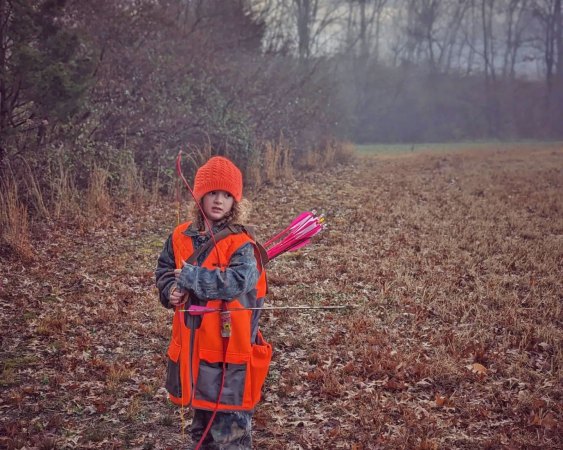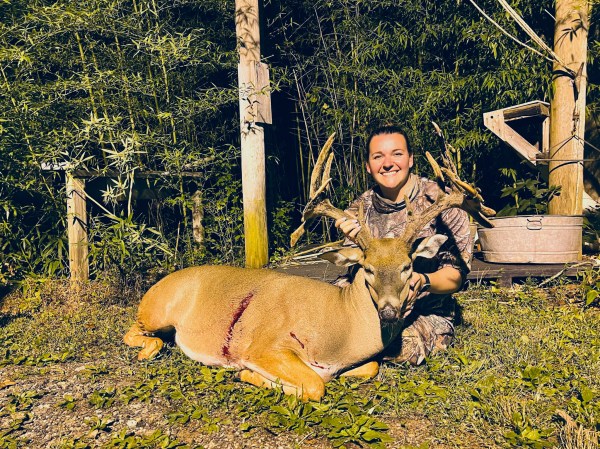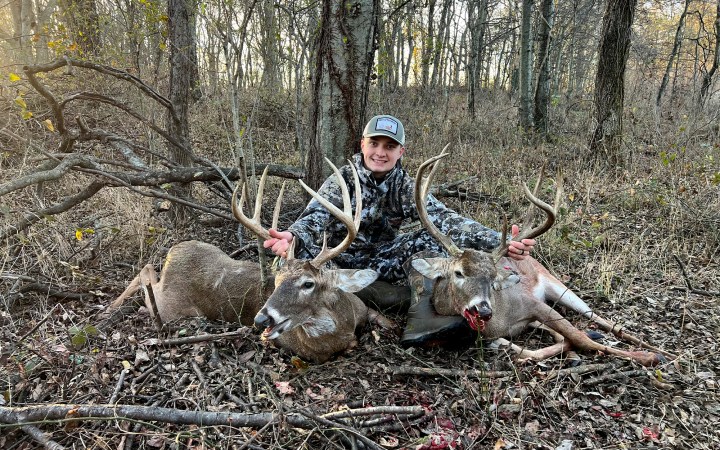I WAS SWEATING in my waders in the June midday heat, my bloodshot eyes straining to find even the smallest drop of blood as I searched on hands and knees. Finally I had to accept what I had known within 15 minutes of taking up this trail nearly 14 hours earlier: This grizzly wasn’t dead, and likely wasn’t going to die. Completely exhausted, I walked a mile back to my treestand to collect my gear and replay the hunt in my head just one more time.
At about 11:00 that night (there’s still daylight here in Alaska in late spring), the crack of a stick shook me out of semi-consciousness. It came from a stand of dark timber maybe 100 yards away, across a small creek from my bait site. Then I heard another snap. There was no doubt now, so I readied myself for the shot I’d been hoping to get for the past six months. When I heard him slosh across the creek, I knew he was committed.
Read Next: Grizzly Hunting with a 6.5 Creedmoor
The big grizzly approached on the most ideal trail, swung in front of me, and turned broadside. My heart was racing, but I focused on breathing and telling myself, Just execute the shot. I drew my longbow, settled, let the string blow through my fingers, and watched as my stone-tipped arrow buzzed in perfect flight…but then seemed to fall out of the sky.
Shit! I thought. That was low, but still probably hit the heart. I listened as the grizzly crashed down the trail, across the creek, and into the timber. “He should be down,” I said aloud to myself, straining to hear any more noise in the distance.
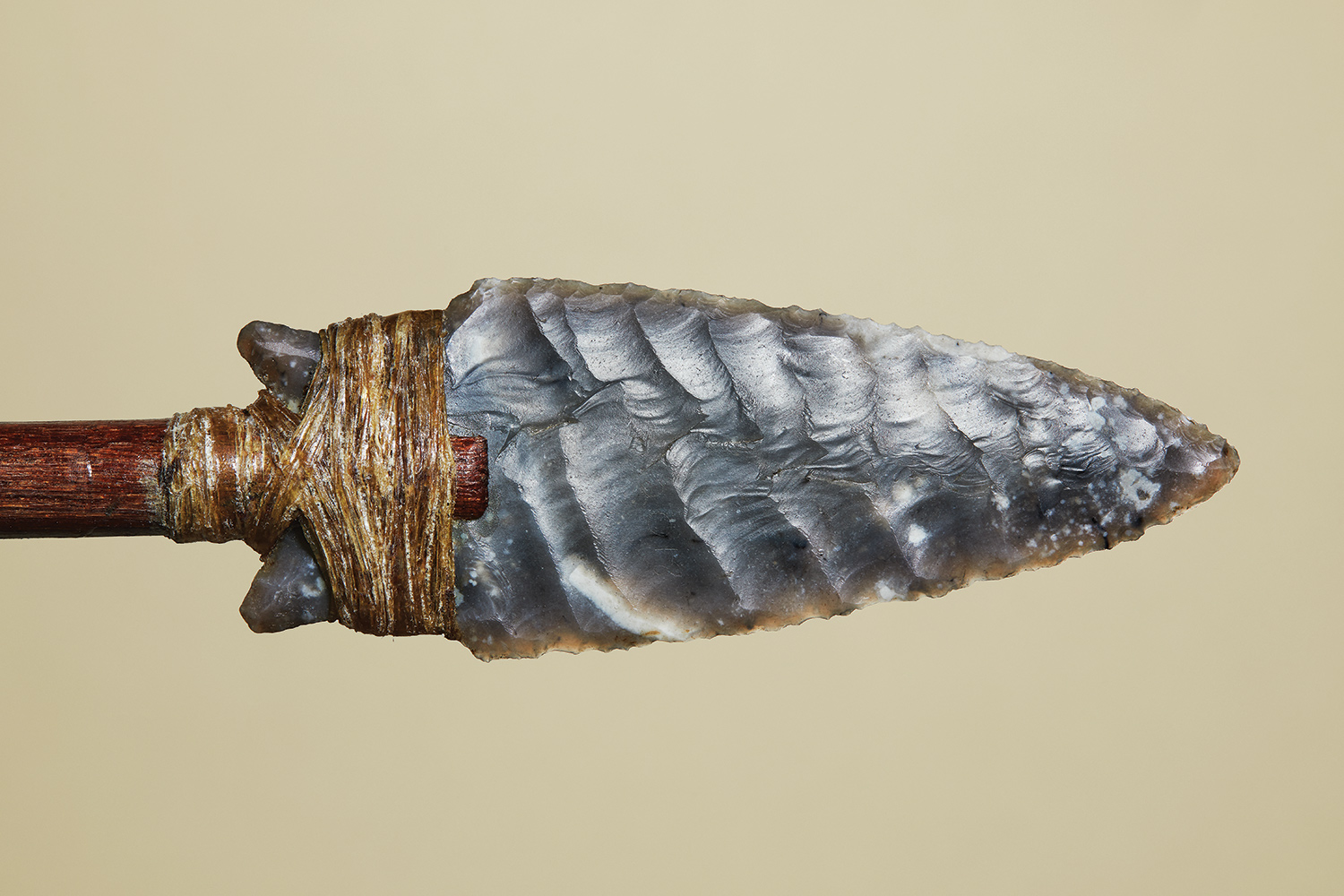
After a long wait, I put on my waders and took up the trail. Across the creek, the blood trail was massive. As I rounded each tree, I expected to find the bear, lying dead. Within 100 yards, the blood trail evaporated. Another 200 yards later, just after midnight, my gut told me that it hadn’t been a lethal hit. But I still spent the night crawling down foot-wide bear trails through the alders and grid-searching after I ran out of blood. I repeated this process into the afternoon the following day, when I finally had to accept reality: I’d made a bad shot.
I lost a lot of sleep over that bear. I would lie in bed at night with a knot in my stomach, replaying the shot in my mind. The only relief came when I’d finally drift to sleep, then I’d remember it as soon as I woke up. I would have given almost anything to get that arrow back and aim just 2 inches higher.
Eventually I realized I’d have to either give up on the idea of killing a grizzly with a stone-point arrowhead or get over my previous season and commit to a new level of training and determination. With two more perfect stone-point arrowheads waiting in my quiver, I chose to continue my quest.
Another Shot
That winter I sought the help of Tom Clum Sr., an expert archery coach and owner of Rocky Mountain Specialty Gear, a bow shop in Denver. I spent three days with Clum and completely relearned how to shoot a traditional bow. I had to change everything about the way I shot, and by the time the snow started to melt, I had a newfound confidence in my ability. The mechanics of my shot were now much more consistent, but Clum also helped me understand the mental aspects of making a good shot under pressure.
Spring 2019 was a fresh start. One of the key observations I’d made from my previous shot was that the stone-tipped arrows seemed to hit a little lower than the steel-tipped ones I used for practice. I took this into account and pounded arrow after arrow into my bear target every day and kept at it as the season opened.
In mid-May I got a trail-camera picture of a huge boar grizzly that had hit the bait that very morning. I knew he would be back, and I climbed into that same treestand from which I’d lost the bear almost a year before. It was 4:25 p.m., so I had a long sit ahead of me. About four hours later, a thunderstorm had me swaying in my treestand, but I could see sunlight on the horizon. I decided to ride it out.
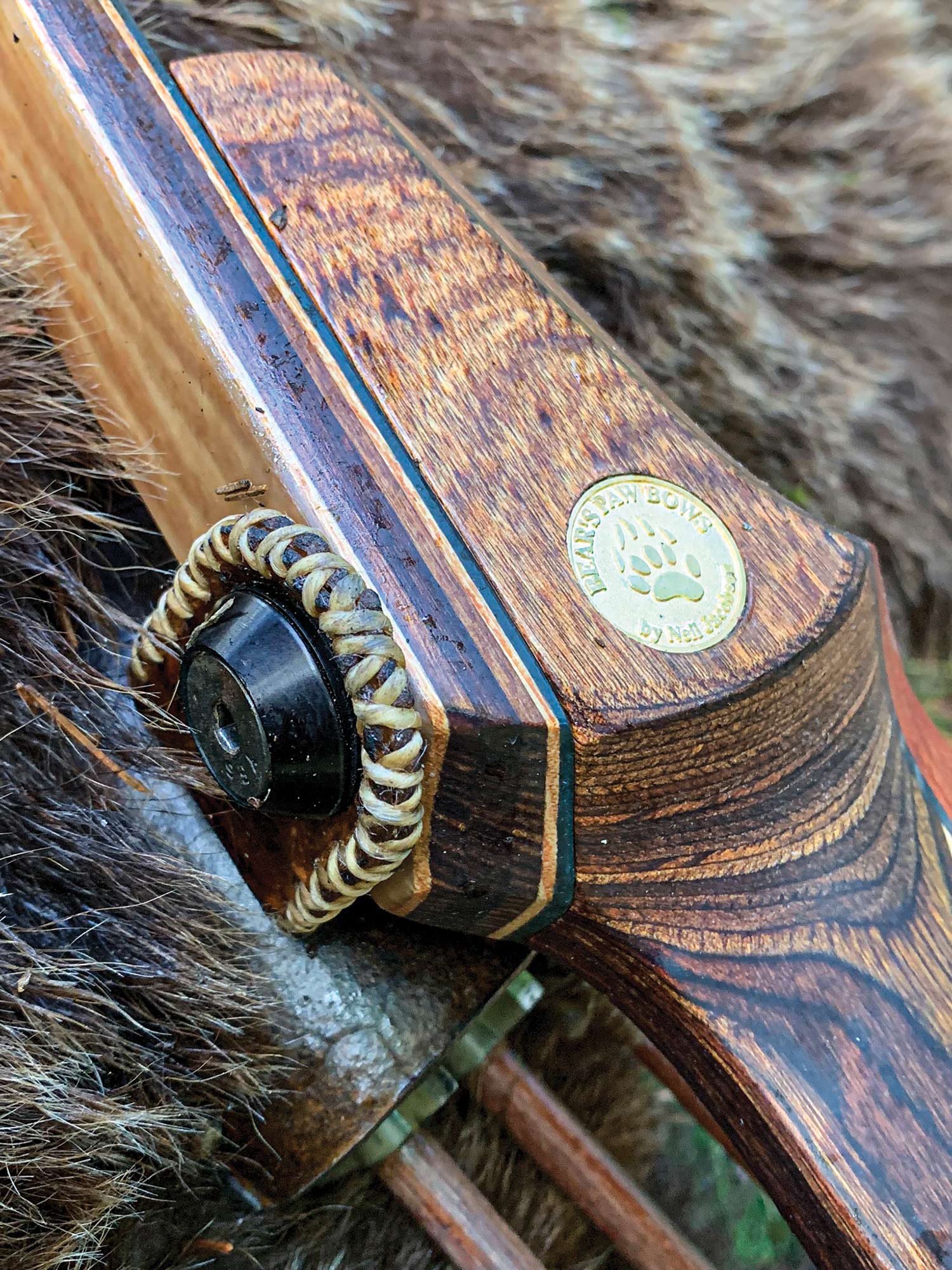
Grizzlies will often show up during the dead calm immediately after a storm. But by midnight, doubt had started to creep in. At that stage of spring, nightfall never fully -arrives in interior Alaska, but it still gets pretty dark around 2:30 a.m. Of course, that’s when the old boar decided to show. He approached slowly, and I could hear his every footfall in the muddy alder patch.
He crossed the creek and was approaching from behind my right shoulder. I was calm — adrenaline tempered by 10 hours in the treestand. I quietly and quickly prepared. The conditions weren’t ideal, but it was still light enough to shoot if the bear was broadside and standing still. When he appeared from the alders, I lost my breath. He was huge. He lumbered toward me and passed directly beneath my stand. The wind on my cheek was good.
He’s dead, I thought as I looked down on his yardstick-wide back. He had no idea I was there. He swaggered to my left and spun broadside as his nose hit the scent my boots had left while I checked my trail cam on the way to the stand. I silently came to full draw, but he was positioned behind me, and I could not get a shot with my longbow. After a few seconds, I let down, and he made for the bait. Instead of stopping, he just kept walking. The boar disappeared into an alder patch and never returned.
Making It Count
A week later, I met Clum at the Fairbanks airport. He had flown up to hunt black bears with me. But our black bear hunt quickly turned into a grizzly hunt, as grizzlies had moved onto the baits and run off the smaller bears. Even though he couldn’t hunt them as an unguided nonresident, Clum was just as excited at the prospect of seeing a grizzly bear up close. So I took the shooter’s stand with my longbow and he sat in a secondary stand. My coach would now be just a few feet away when I hopefully got a shot at redemption.
We never heard the bear, but I saw him between the trees back in the timber. I gave a lip squeak to Clum, motioning that the bear was coming. I was ready before came back into sight.
Sure enough, a huge boar made his way toward us. He was totally unaware of our presence and stopped behind the tree that the bait was on. He was only 20 yards away, but I had no shot. I could feel my pulse pounding in my neck as I stood perfectly still, holding slight tension on the bowstring. My vision began to blur, and the edges of the scene became tinged in white. I had to breathe. I stole some slow, deep breaths, relaxing my grip on the bow to calm down.
After what seemed like an hour but was more like a minute or two, the bear took a step backward, rotating more broadside and exposing his ribs. I picked a seam in the thick spring hair and told myself, You are going to control this shot or you’re not going to shoot.
As I settled into full draw and began to add tension, the string blew through my fingers. The arrow hit the exact spot I’d aimed for, penetrating deeply. The bear let out a growl and tore off into the thick brush. After what sounded like a 60- to 70-yard run, he stopped, and all was quiet.
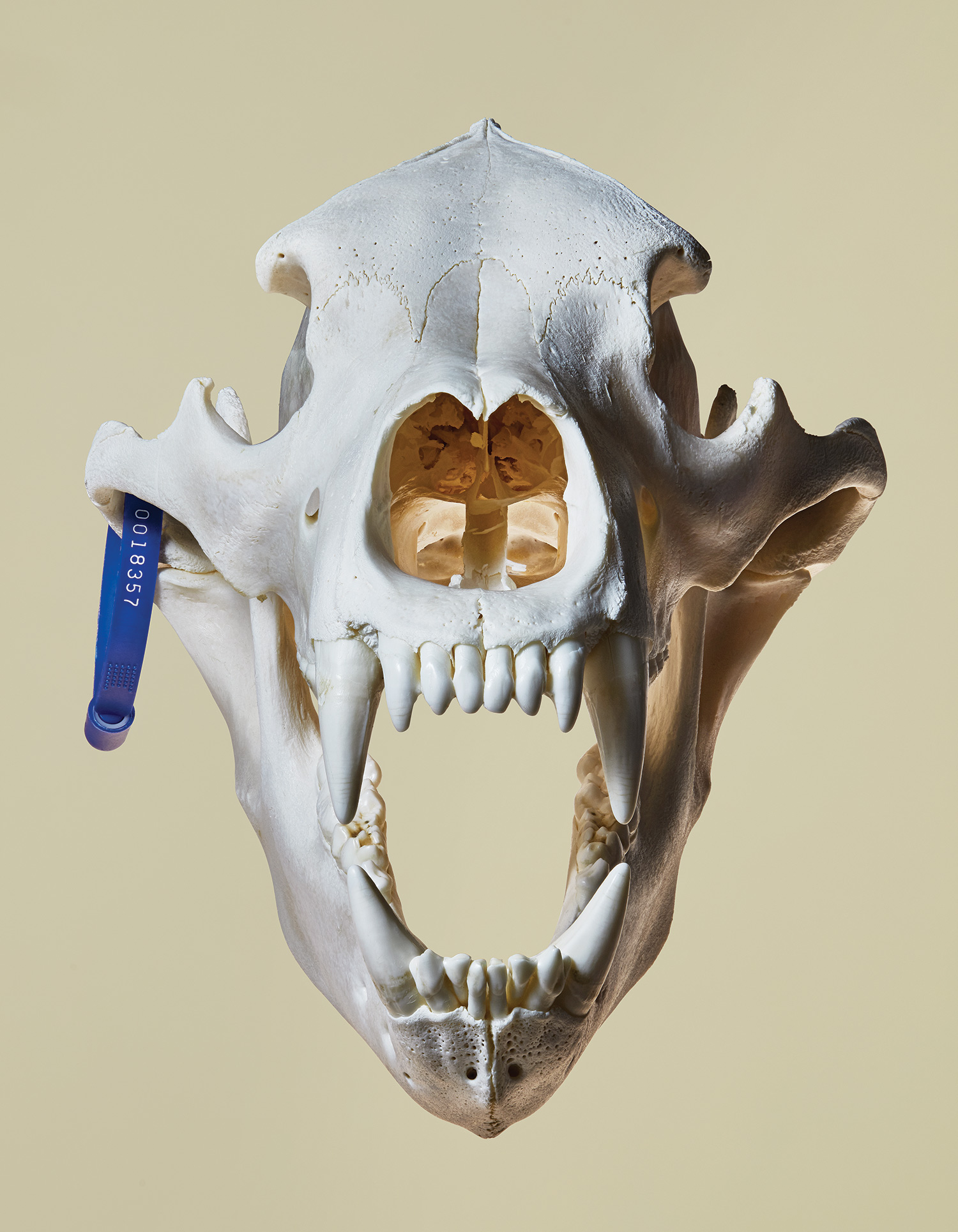
“That was money,” Clum said. But as we started dissecting the footage that he had recorded, our certainty ebbed. As the bear ran, the angle of the arrow revealed that he hadn’t turned nearly as broadside as I had thought. The -arrow, without a doubt, had penetrated the ribs well in front of the diaphragm, hit the liver and guts, and possibly the off-side hind leg, which stopped its penetration. It was -unquestionably lethal. The question now was how long it would take for the arrow to do its work.
About three hours later, I turned to Clum. “I want to at least find blood and see if he’s there dead,” I said, readying my .375 Ruger. “If he isn’t, we’ll pull out and come back in the morning.”
Read Next: The Best Bear Defense Handguns
We plunged into the brush and quickly found the back half of my arrow, snapped off on an alder. We followed the trail the bear had made on his retreat. We found blood, then more, and we carefully began pushing our way through the tall rose brush. We were looking for more sign when I heard rustling and waved at Clum to stop.
With so many hours sitting in the woods, you get to know certain sounds. Even the sound of a vole scurrying through the leaves is distinctive. I instantly knew the sound I heard now was no vole. It was not growling, or even labored breathing, but I distinctly heard the bear roll over in what sounded like tall grass, then climb to his feet. It was as clear as if I had actually seen it happen.
I looked at Clum and mouthed, “We need to get the hell out of here.”
The Trail Back
The ride home that night was quiet. No one wants to leave an animal overnight, and my cautious — and somewhat forced — optimism was overshadowed by a growing sense of dread that history was repeating itself. Grizzly bears are tough, and if pushed, wounded bears can sometimes travel miles, making recovery impossible.
Sleep hadn’t done much to temper my anxiety when we took up the trail the next day. Just 15 yards from where we had made our hasty retreat, we found his first bed but very little blood. As we slowly sorted out the bear’s trail, we could smell him. It was just a whiff here and there, but the sharp, distinct odor of a grizzly is unmistakable.
“God, not again,” I whispered to myself. Clum and I were sitting in the shelter of a spruce tree as rain pounded down around us, eliminating any drops of blood we might have found. Thunder boomed in the distance.
As soon as the rain let up, we followed the broken undergrowth, and occasionally we caught the foul stench of churned-up mud on the bottom of leaves, which was as good a sign as blood.
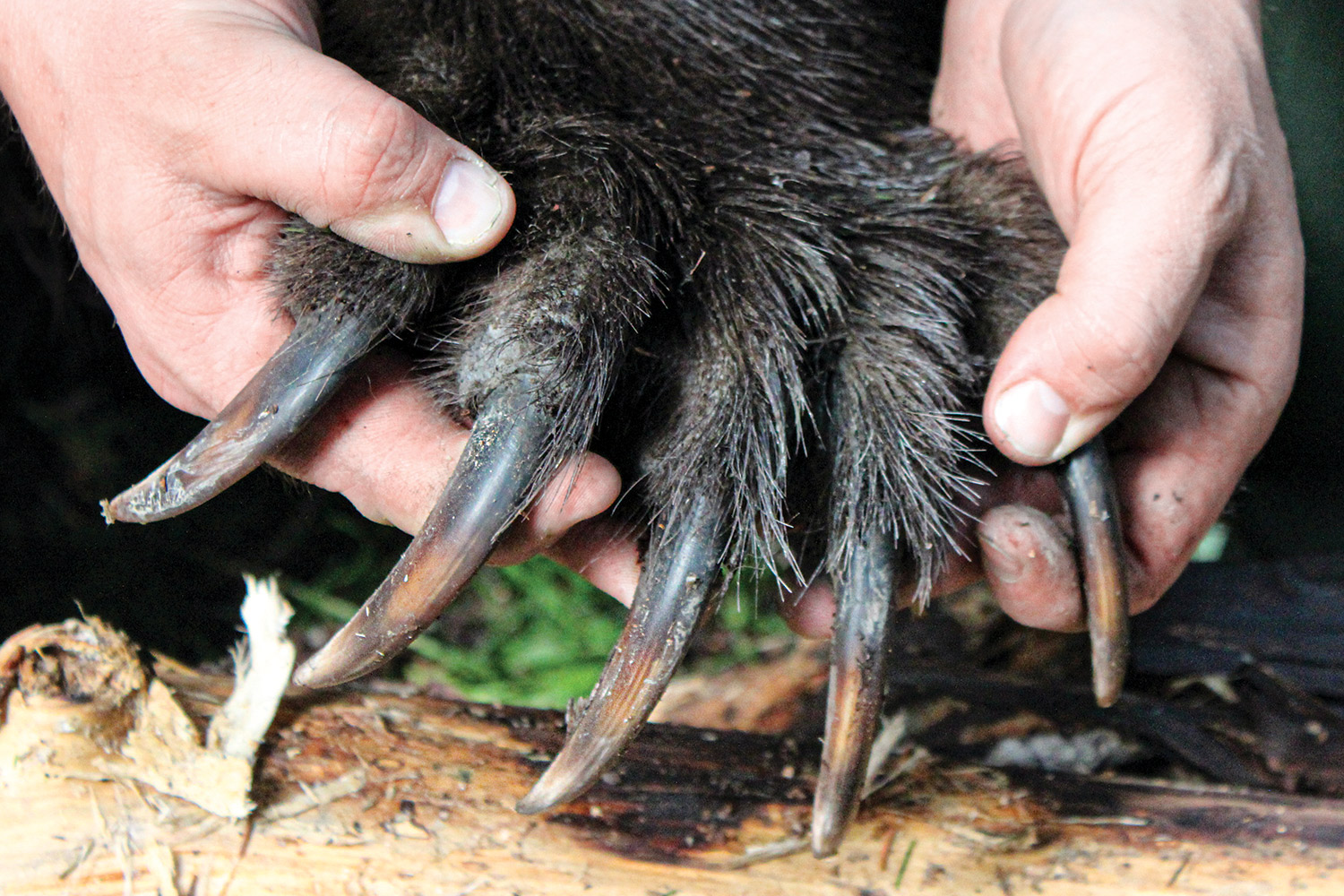
I was on my hands and knees when, just 5 yards away, the cover erupted. I snapped my .375 to my shoulder and damn near touched off a round at a flushing ruffed grouse.
Clum had a good laugh at this, though it almost gave me a heart attack. The cover was so thick that if the bear were still alive and decided to charge, he’d be on us almost instantly. And he had to be close. His trail hit a well-worn game trail that we followed to a tightly knit patch of spruce.
“Look in there with your binos,” I said to Clum. “Doesn’t that look like bear hair?”
And sure enough, it was. He was dead. It was finished.
I’ve killed lots of grizzlies before, but none have meant more to me than this bear. He was a big, beautiful boar: tough, clever, and magnificent, and the true picture of interior Alaska. But the bear also represented a change in myself. I had put such an incredible amount of effort into improving my skills so that I’d be able to kill him with primitive equipment — a sharp rock hafted to a stick — that I knew I’d never be the same bowhunter.
Clum and I skinned the boar, but the front half of the arrow was nowhere to be found. The arrow exited the stomach and pierced the hind leg, and after snapping must have fallen out on his trail. I wasn’t able to recover the stone point either. Its final resting place would be somewhere along that game trail through the dark timber. But still, the arrowhead had done its job, just as it had for millennia.
Why Hunt Grizzlies With an Arrowhead?
It’s a fair question. For many folks, even many hunters, hunting grizzly bears is fraught with ethical dilemmas.
Here in Alaska, grizzlies have never been a threatened species. They are a part of the landscape and play their role as one of the top predators and scavengers — no more or less important than any other native animal.
Well-regulated grizzly hunting has proven to be good for both ungulate populations and for the bears themselves. Fairly selective harvest of mature boars (which are highly effective moose hunters) allows more calves to survive their perilous first few weeks of life, after which they have a substantially higher rate of survival. Since mature boars also regularly kill bear cubs, this also allows for a higher cub survival rate. I’ve seen the results firsthand in the area where I’ve been hunting grizzlies almost a decade. More moose calves are surviving, but I am also seeing sow grizzlies bringing two or three cubs into adulthood, which is quite a feat for any sow.
But none of that is why I love bear hunting. In its own way, hunting grizzlies over bait is one of the most challenging and exciting hunts that I have ever done. The success rate for taking grizzlies over bait in interior Alaska is less than 5 percent. It usually takes me more than a month to get a good shot opportunity.
Using primitive equipment only amplifies the challenge. When the stillness of the midnight air is broken by the snap of a stick, and a very real monster comes lumbering out of the timber, your heart will thump so hard you’ll worry that the bear will hear it. You have to wait until he gets close, inside 20 yards, and if he senses any danger, he’ll vanish into cover.
Shooting a bear with a traditional bow is a deeply personal experience. In some small way, I thought that using an arrowhead might connect me to the centuries of bowhunting history before me and to the nomadic hunters who thrived in this country using these sharp rocks to take down mastodons and fend off saber-toothed cats. But more than anything, I wanted to see if I could actually do it. Could I develop the skills to kill an animal with the same tools they had used? The deadliness of the arrowhead was a marvel to me, but it was all theory and history. I wanted to experience it for real.
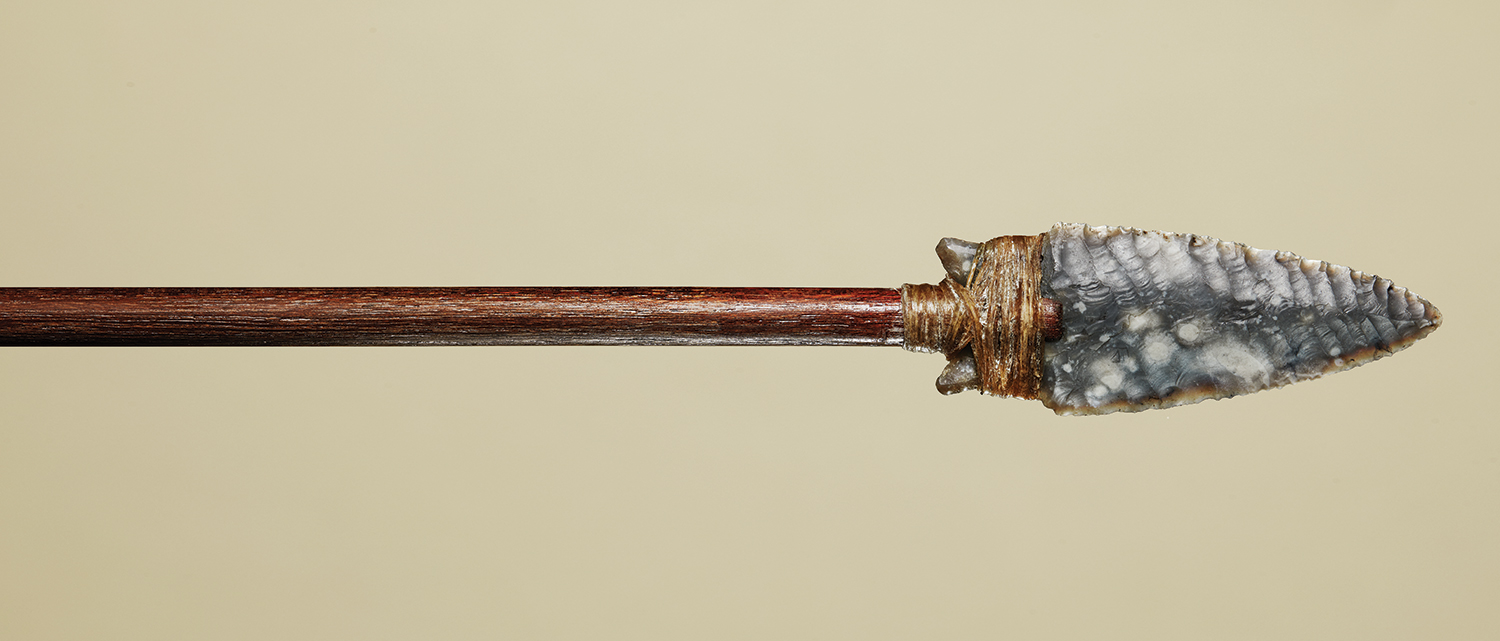
Points of History
Humans have used stone to kill their prey and enemies far longer than we’ve used steel or lead. Researchers place the earliest evidence of humans using stone tools at some 2.6 million years ago, and various groups of humans relied on stone up until the last several hundred years. But the skills and knowledge required for making arrowheads, which would have been mastered by every village and tribe, have quickly faded into the past with the advent of modern technology.
Here’s the simplified version of how it works: Rock that easily flakes, like flint, chert, or obsidian, is broken into pieces with hammerstones — hard, rounded rocks like those you might find on a riverbottom. These are then worked into smaller flakes, out of which points are shaped. Edges are honed with tools made of copper or antler tines by applying pressure to precise spots. This splits away thin flakes, leaving a sharp edge.
There are still a few folks out there who practice the craft, and one of them happens to be Greg Nunn, whom I hosted on a moose hunt a few years ago.
Nunn’s passion for knapping started with watching his father chip away at arrowheads and grew when he became obsessed with a school library book on the subject. Nunn eventually went on to work for an archaeological firm, where he studied Neolithic flint daggers from Scandinavia.
“They were at the height of all flint-knapping technology in the world, just before the Bronze Age,” says Nunn.
There was a lot of mystery around how the blades were made, and part of Nunn’s job was to figure out each step in the ancient process. He had a knack for reading the rock and being able to tell how blades had been shaped and flaked into their final forms. He theorized that a few master blade makers worked on the perfect, high-end daggers that were used mostly for ceremonial purposes, while apprentices hammered out everyday blades and tools. Nunn is now an expert on just about any stone-tool technology — but his specialty is arrowheads.
“I’ll make you three points and haft them onto shafts for you,” Nunn told me while sitting in my living room, sketching out the profile of the points he would make. A passionate bowhunter himself, Nunn has killed a dozen elk with stone arrowheads. The ones he was planning for me would have to be sturdy, reliable, and sharp. “You’d be surprised how effective they are.”
A good stone edge is a different kind of sharp from steel. It won’t shave hair, but when flaked correctly, it can be honed to an extremely fine edge. The result is an irregular edge, with an almost serrated effect. According to Nunn, the thickness of a stone’s cutting edge increases more quickly than an evenly ground steel edge. He thinks this may spread the wound channel open and cut blood vessels more violently. In his experience, stone points create wounds that bleed dramatically.
“For a hunting point, I prefer a good flint point that isn’t heat-treated [which makes the flaking process easier]. If it’s easier to make, it’s easier to break,” Nunn says. He also stays away from obsidian because of its brittleness. He also avoids aggressively serrated edges, which might feel sharper but which increase resistance and are actually duller than a clean, straight edge. History is on his side here: Serrated points show a relatively short existence in the archaeological record.
While stone points are as deadly today as they were in the Stone Age, there are plenty of good reasons for switching to metals like copper, bronze, and iron for our projectiles. Stone is very brittle compared to metal. A stone point has great strength under compression but is much more likely to fail under the twisting or leveraging forces that occur when an arrow hits something hard, like bone. Also, each stone is different, which can make for inconsistencies in the point of impact. Finally, they are labor-intensive to produce.
I eventually received three points from Nunn, which he had carefully knapped from pieces of flint he had collected while working in Denmark. Each head took several hours to shape.
Read Next: The Best Bear Hunting Cartridges
One of the biggest challenges was that I couldn’t practice with the stone points, because shooting them at a target would risk damaging or breaking them. And even if they didn’t break, the target would likely degrade their edges.
Nunn hafted the arrowheads with moose sinew onto red balau hardwood shafts, custom-made to accommodate my 32-inch draw length. They were beautiful and robust 200-grain points, making for a total arrow weight of almost 1,000 grains.
Late one May evening, I got a 15-yard broadside shot on a black bear with one of Nunn’s arrowheads. At the twang of my longbow, the arrow zipped in just the way an archer dreams it will, the chartreuse feathers cutting a streak through the fading light and disappearing slightly low — but still striking through the heart.
A 50-yard blood trail led to the dead boar. I was shocked at what I found. A circle of the forest floor 6 feet in diameter was covered in blood. With that, I was fully confident that Nunn’s arrowheads would work on a grizzly.
This story first ran in the No. 4 2020 issue of Outdoor Life.

